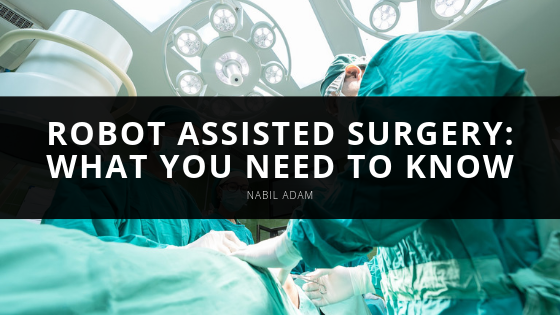Although robots have been used in surgery for over a decade, many individuals still have questions regarding how and why many surgeries are now being performed with robotic assistance.
Unlike some standard surgeries, robot-assisted surgeries are often minimally invasive as the robotic apparatus can work in an incision as small as a quarter inch. This can often lead to shorter healing times for patients – particularly during surgeries in a small, confined area such as surgeries for urology and gynecology. However, as with any tool, the success of robotic-assisted surgery is dependent on the surgeon operating the robot. Robots during assisted surgery are not autonomous and are instead controlled by a surgeon from a console.
During robot-assisted surgery, the surgeon operates the apparatus from a console with both hand and foot controls. Each of these controls corresponds to a limb of the robot, and a small camera allows the surgeon to closely observe the procedure. The surgeon can scale their movements to those of the robot arms while viewing their actions from a screen.
In some medical schools, students practice with the robot in a virtual reality system to become more comfortable and competent with the controls. In addition, many of the virtual reality programs track the accuracy of students. This ensures that they are operating the robot both efficiently and safely before operating on patients.
Like any new technology, robot-assisted surgery is not a technique that all surgeons are experienced with. In some surgeries, robot-assisted surgery may not be the best option or may not be necessary. Robot-assisted surgery and the robot itself can be prohibitively expensive; for example, the da Vinci robot surgical system can cost hospitals up to 2 million dollars. As well as being expensive, recent studies have found that in certain cases of cervical cancer, minimally invasive robot-assisted surgery has been linked to a higher recurrence of cancer.
Robot-assisted surgery is ultimately a fairly new tool that many surgeons are still mastering. As more surgeons become skilled with the apparatus, the occurrence of minimally invasive surgeries with robots will likely become more common – allowing shorter recovery times and increased patient comfort during these surgeries.

